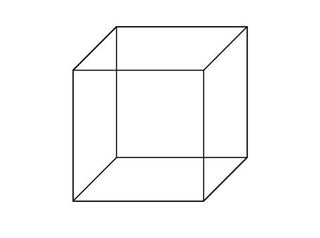Over the course of millennia in the history of philosophy and science, people have debated how to conceive of the present moment: as a mathematically describable point in the flow of time, as a simple intersection between the future and the past, or as an extended period of time.
Around the year 400, Saint Augustine advocated the position that the "Now" has no extension. This is his argument: If the present moment is extended then we can determine a series of points in time on the extended temporal line spanning this moment. But then each of these points in time has other points in time that lie in front of and behind it. These points in time represent what is past and what is future. But then, this temporal line cannot represent the present moment, as it contains all three temporal dimensions. Accordingly, the moment must be without extension.
On the other hand, it can be argued that we perceive movement and change, the experience of the temporal ordering of two events, as present. A shooting star burning up as a bright movement in the night sky is experienced with a duration, albeit short. This lived moment of the shooting star is expanded; only because it is expanded can I perceive any movement at all. Experiencing music does not happen as a series of isolated sounds. A melody is perceived as an extended unity. Even if the individual sounds in the melody have a temporal sequence, a before and an after, they are integrated into an audible shape, a whole. The musical experience depends on the perception of the extended shape of a melody.
This means, in physics and as an abstract philosophical idea, the moment is a point in time without extension. Psychologically speaking the now is an extended period of time. Otherwise the perception of change and movement at the present moment would not be possible. The lived moment is necessarily extended. Let us also remember that just saying the word “now” takes about a third of a second.
An upper temporal limit must apply to our sense of being present. I can only describe as present what is now present to me as an internal or external experience. Anything that has just been experienced and thought and has not yet been forgotten is still present. What happened an hour ago is not anymore present as experience but as memory. Five or 10 minutes are also too long as time span to represent what I feel as now. The upper limit must be connected to what is present mentally within the span of my short-term memory capacity of between several seconds and perhaps half a minute. But these are only rough guidelines. In the lived presence, feelings, thoughts, and sense impressions are integrated into a whole, forming me as active agent of a physical and mental self that is acting in the world. The consciousness of the totality of the whole here and now—my experience of self physically and temporally extended—is mental presence.
Research also suggests another, shorter temporal moment. It seems to be the case that perception and action function optimally in units of up to approximately 3 seconds in duration. Perception is accumulated into units of this duration, with the consequence that individual events are experienced as belonging to one moment in time. Acoustic temporal units, such as in the case of the metronome, where the individual beats are automatically assembled in groups of “one-two” or “one-two-three”, exemplify this work of integration. If the intervals between two metronome beats are longer than approximately 2 seconds, the ability to integrate fails, and only individual, disconnected beats are heard: “one – one – one …”. If the task is to accompany the metronome beats using one’s own movements, say, clapping the hands, the ability to accompany the stimuli accurately fails if the intervals between the beats are longer than 2 seconds.

In the case of visual bistable images such as the Necker cube (in which one can view a cube from two different perspectives; see the Figure) the visual aspects alternate approximately every two or three seconds.
A great deal of empirical data demonstrates how human perception and action are automatically grouped into units of this duration. This temporal structure can also be found in language and music. Repetitive actions such as shaking hands in an everyday encounter, or athletes and trainers hugging each other at sporting events demonstrate cross-culturally an approximate duration of up to 3 seconds. Again, these are rough estimates that point to duration in the range of a few seconds (and not fractions of a second and not many seconds). Perception and action are integrated into a whole within a temporal window of this duration. In a social context two or more people are anchored in time and interact on this shared temporal platform of an experienced moment.
If we talk about an experienced or lived moment, then we mean the moment of just a few seconds that structures our perception, our feeling of being now and here. This perceptual present-time moment is embedded in the mental presence of my self, as a narrating, commentating self. It is the consciousness of my self as a perceiving self—now. Perhaps the present moment, which we should not think of as static, is something like the standing wave on the Eisbach (ice stream) in the city of Munich, where the wave is constantly renewed by the flow of water (the flow of time) yet varies little across time as an extended stable now (here is the YouTube video):
References
Pöppel, E. (2009). Pre-semantically defined temporal windows for cognitive processing. Philosophical Transactions of the Royal Society B 364, 1887–1896
Kiverstein, J. (2010). Making sense of phenomenal unity: an Intentionalist account of temporal experience. Royal Institute of Philosophy Supplement 85, 155–181.
Wittmann, M. (2011). Moments in time. Frontiers in Integrative Neuroscience, 5 (66).



